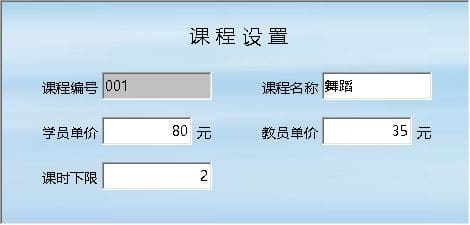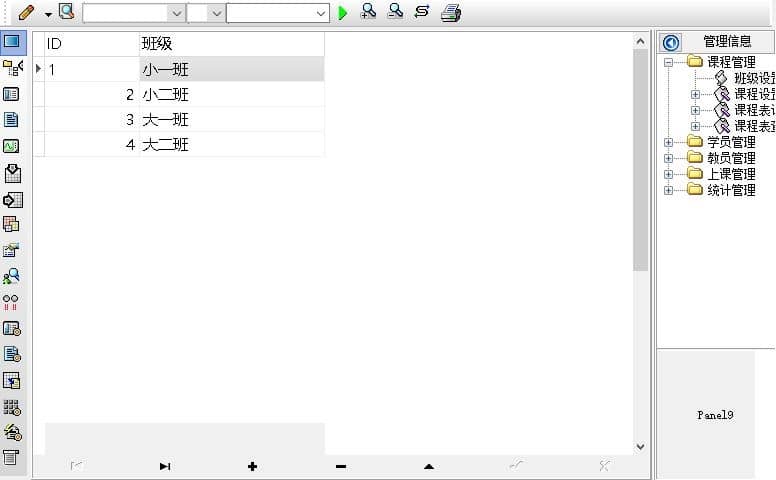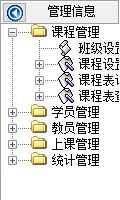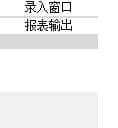Course management includes: course setting, class schedule setting, class schedule viewing
Course setting: Course setting table; paper type: A4; Paper placement: vertical; report type: Multi-record report;
Report: The report realizes the format and print output of information and data







Form interface:
Form interfaceDisplay the information content in the form of a table.
The tabular interface displays and manipulates information in a tabular manner in the “Information Operation” area.
The form interface has the upper toolbar (form information operation toolbar) and the left toolbar, which are used to realize information operations. Most of the space in the middle is information displayed in the form of a table.
(The sample data contained are all fictitious, if there are any similarities, it is purely coincidental)
Information management tree: Other information of the system can be directly accessed through the information management tree.
At the bottom of the information management tree, you can access the entry, reporting, and analysis windows of the current information.
————————————————–
(Figure 2) Record navigation bar:
Realize the movement of information records and add, modify, delete and other operations.
按钮的功能依次为:[第一条记录][最后一条记录][插入一条记录][删除当前记录][编辑当前记录][保存当前记录][取消当前记录修改]
————————————————–
(Figure 3) Table Information Operation Toolbar:
Realize the common information operation of the form interface.
Input method selection: Specify the input method used in the system. After setting, it will be valid throughout the operation of the system, unless it is manually changed to another input method.
Query refresh: Refresh the display data.
Query combination: Combine together to complete the condition setting of filtering records, followed by:
The "Condition Field" drop-down list is used to select the name of the field that makes up the condition expression.
The "Conditional operator" drop-down list is used to select the operator symbols that make up the conditional expression.
The "Condition Value" drop-down list is used to select the value that makes up the condition expression.
Perform filtering: Perform filtering and refresh the table information according to the previous query conditions.
Compound screening: Perform more advanced compound screening.
Cancel filter: Cancel all filters set, refresh and display all records.
Desordering: If you sorted by clicking on the field name of the table header, by clicking this button, the normal order of the records will be restored.
Form printing: preview (print) the currently displayed information record.
Left toolbar: Provide other commonly used functions
System navigation (show hidden system navigation).
Hide/show the information management tree (hide/show the information management tree).
Entry window (entry window).
Information printing (use reports to display printed information).
Information analysis (information analysis).
Filter settings (record filter settings).
Field display (field display filter settings).
Table settings (table interface settings).
Input assistance (form-assisted entry settings).
Trigger setting (calculation and verification at the current table record level).
Field calculation (field batch calculator settings).
Pattern design (design entry window).
Print the design (modify the report format).
Form printing (form printing preview).
Information design (Information sheet designer).
Information processing (operation tree).
Menu conversion (create/cancel menu management).
Class settings: class name and class ID


Leave a Reply